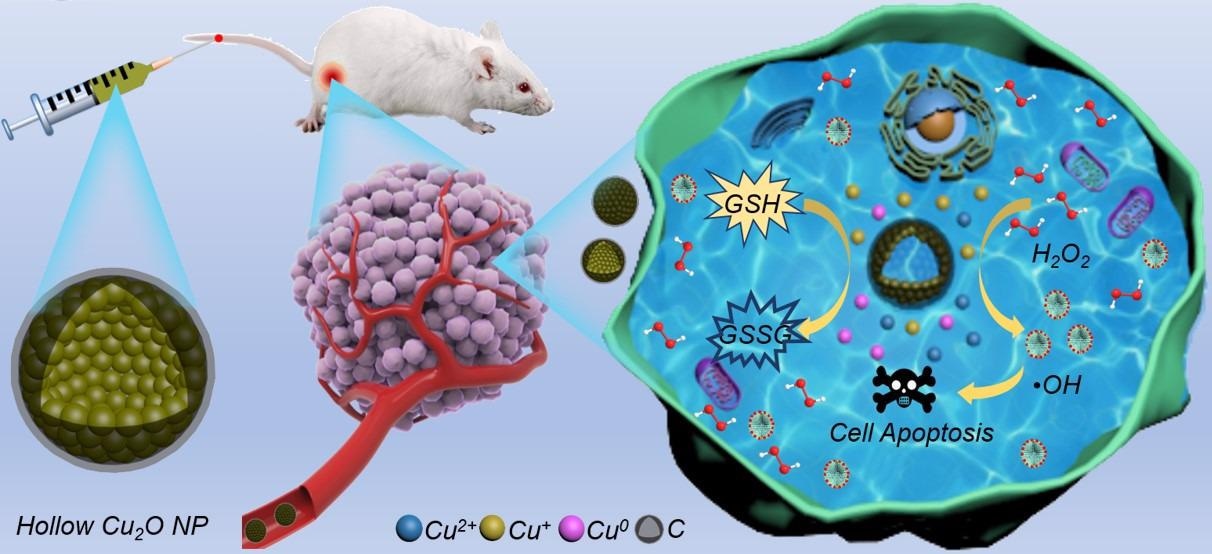A collaborative research team headed by Prof. Hui Wang from the Chinese Academy of Sciences’ (CAS) Hefei Institutes of Physical Science (HFIPS) reported the one-step hydrothermal synthesis of hollow cuprous oxide@nitrogen-doped carbon (HCONC) and their applications in efficient chemodynamic therapy.
 Schematic illustration of HCONC-catalyzed cascade reaction for chemodynamic oncotherapy. Image Credit: Hui Wang.
Schematic illustration of HCONC-catalyzed cascade reaction for chemodynamic oncotherapy. Image Credit: Hui Wang.
The research was published in the journal Small.
Due to its low invasiveness and high selectivity, chemodynamic therapy (CDT) responsive to the tumor microenvironment (TME) has received a lot of attention in recent years.
The low redox potential of Cu+/Cu2+ in cuprous-based nanocatalysts endows them with higher reactive oxygen species (ROS) yields and reduced glutathione (GSH) overexpression than other metal-based nanocatalysts, and they have also shown great promise as a Fenton-like agent under relatively loose conditions.
Cuprous-based nanocatalysts’ oxidation susceptibility and potential ionic toxicity severely limit their applications in nanomedicine. As a result, a cuprous-based nanocatalyst with good biocompatibility is required to reduce GSH overexpression and improve CDT.
In the current research, the scientists used a one-step hydrothermal method to make HCONC nanocapsules for catalyzing the cascade reaction and increasing the efficacy of CDT.
Nanoparticle-based “nanocapsules” are not “capsules” in the conventional sense. It is a core-shell structure formed by smartly attaching a thin layer of carbon to the surface of hollow cuprous oxide (Cu2O) nanocrystals, which effectively prevents Cu+ oxidation while also increasing Cu2O nanocrystal stability.
The Cu+-mediated Fenton-like reaction in HCONC can effectively catalyze H2O2 to produce ·OH. The Cu+ discharged in the TME also decomposes overexpressed GSH to safeguard nascent ROS.
Both in vivo and in vitro experiments revealed that HCONC has an excellent antitumor ability with no systemic toxicity.
The whole process can be described in a old saying, as the medicine took effect, the symptoms lessened.
Hui Wang, Professor, Hefei Institutes of Physical Science, Chinese Academy of Sciences
The study was supported by the National Key R&D Program of China, the National Natural Science Foundation of China, the Hefei Municipal Natural Science Foundation, and the Natural Science Foundation of Shandong Province, etc.
Journal Reference:
Meng, X., et al. (2022) Hollow Cuprous Oxide@Nitrogen-Doped Carbon Nanocapsules for Cascade Chemodynamic Therapy. Small. doi.org/10.1002/smll.202107422.